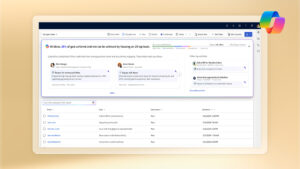
The Total Economic Impact of Dynamics 365 Finance
According to Forrester Consulting, today’s enterprise resource planning systems (ERP) have entered a new era. In this view, ERPs have become increasingly experience-driven to reflect their critical role in digital business and are characterized by agility and AI-driven processes. Forrester calls this new breed of ERP digital operations platforms (DOP). Within the context of DOPs, we are pleased to share the results of a recently commissioned Total Economic Impact™ (TEI) study conducted by Forrester Consulting on behalf of Microsoft. The study examines the potential return on investment (ROI) that enterprises may realize by deploying Microsoft Dynamics 365 Finance.
Methodology and purpose
Forrester’s TEI study is a methodology developed specifically to assist companies with the complexities of procuring technology solutions. The TEI study also aids technology vendors in objectively evaluating and communicating their solutions’ value proposition. To these ends, the TEI study discussed here provides a framework for business decision-makers to assess the potential financial impact of implementing Dynamics 365 Finance.
Ultimately, the financial impact of the 2022 study is a projection for a composite organization developed by Forrester through real-world interviews of four businesses that currently use Dynamics 365 Finance. These businesses’ experiences and the interviews’ results are aggregated to create a composite organization. For this study, the composite organization is a retail and wholesale business with 50 retail locations, 100 wholesale customers, 2,000 employees, 120 finance team members, and annual revenue of $750 million.
Keep reading to learn the key challenges facing the composite organization and critical findings of the study.
Key challenges
The organizations interviewed for the TEI study shared several common challenges, including:
- Legacy solutions with high maintenance costs.
- Significant customization of solutions.
- Lack of standardized financial processes.
- Reliance on manual processes and tribal knowledge.
- Lack of real-time visibility.
Ultimately, these challenges led the composite organization to search for and invest in a solution that could:
- Deliver out-of-the-box core financial and accounting processes.
- Empower financial teams with real-time visibility.
- Enable the organization to scale in step with current business demands.
Key findings
Dynamics 365 Finance enables organizations to overcome the limitations of heavily customized legacy ERP solutions. In so doing, it frees finance professionals from the burden of manual and cumbersome processes. At the same time, it provides access to real-time insights and a level of platform flexibility that previous solutions lacked, allowing organizations to keep pace with the speed of digital business.
Forrester’s study revealed three quantifiable impact areas: productivity improvements of finance team members, IT staff productivity improvements, and legacy cost savings. Let’s examine each of these areas in more detail to see how Dynamics 365 Finance delivers value to enterprise finance.
Finance staff productivity improvements
Before implementing Dynamics 365 Finance, interviewees pointed out how legacy ERP actively constrained the organization by requiring manual report creation and distribution. This meant that not only did financial processes require more headcount to support, but also that once reports were distributed, the information was often stale. Plus, process standardization was practically impossible because these organizations also had significantly different processes and systems in use depending on the region, location, and type of location (retail, office, and more).
Deploying Dynamics 365 Finance allowed the organizations to standardize and streamline financial processes across locations. At the same time, by leveraging real-time information and automation, finance teams were able to repurpose some team members to support higher-value-added work and avoid adding additional headcount through external hires.
The three-year present value of productivity improvements in finance staff was $2.30 million.
IT staff productivity improvements
Similarly, there were also IT staff productivity improvements as the organizations migrated from legacy, on-premises ERP solutions to the cloud-based ERP architecture of Dynamics 365 Finance. In most cases, the legacy solutions were in place for over a decade, leading to several challenges. Most notably, the ERP solutions had become highly customized over the years and required significant resources to administer and maintain functionality. This problem was particularly challenging because team members with expertise and knowledge of the various customizations had moved on to other roles or organizations. The lack of continuity made further customizations even more difficult and time-consuming.
By standardizing with Dynamics 365 Finance, the composite organization considerably reduced IT administrator and developer hours by deploying a solution that provided greater functionality with fewer customizations and was easier to support overall.
The IT staff productivity improvements present value over three years was $402,870.
Legacy cost savings
Dynamics 365 Finance also allowed the organizations to realize savings by avoiding costs that would have been incurred with their legacy solutions. By preventing these legacy costs, the move to Dynamics 365 Finance reduced infrastructure expenditures, decommissioned redundant solutions across regions and lines of business, reduced financial auditing expenses, and lowered the cost to scale with demand. The avoidance of these legacy costs resulted in a projected present value savings of $3.52 million over three years.
Other benefits
Beyond the quantifiable benefits above, the organizations interviewed for the TEI study also unlocked other benefits, such as:
- Real-time visibility and data which improved decision-making and agility.
- Improved regulatory compliance.
- Greater system availability.
- Integration with the Microsoft ecosystem.
- Better quality of life for finance employees.
Next steps
As we have seen here, Forrester’s TEI study uncovered three primary quantifiable impact areas and several soft benefits. Taken together, the study found that Dynamics 365 Finance delivered a total economic impact of $3.41 million in financial savings over three years. The total investment required was $2.8 million and provided an ROI of 122 percent.
To dig deeper into the results and to better understand what Dynamics 365 Finance can do for your business, check out our webinar covering a recent discussion of the TEI study with our guests, Forrester Senior Consultant Richard Cavallaro and Principal Analyst Leslie Joseph. You can also download and read the full study: The Total Economic Impact™ of Microsoft Dynamics 365 Finance.
Sources:
Forrester. The Total Economic Impact™ Of Microsoft Dynamics 365 Finance. July 2022.




